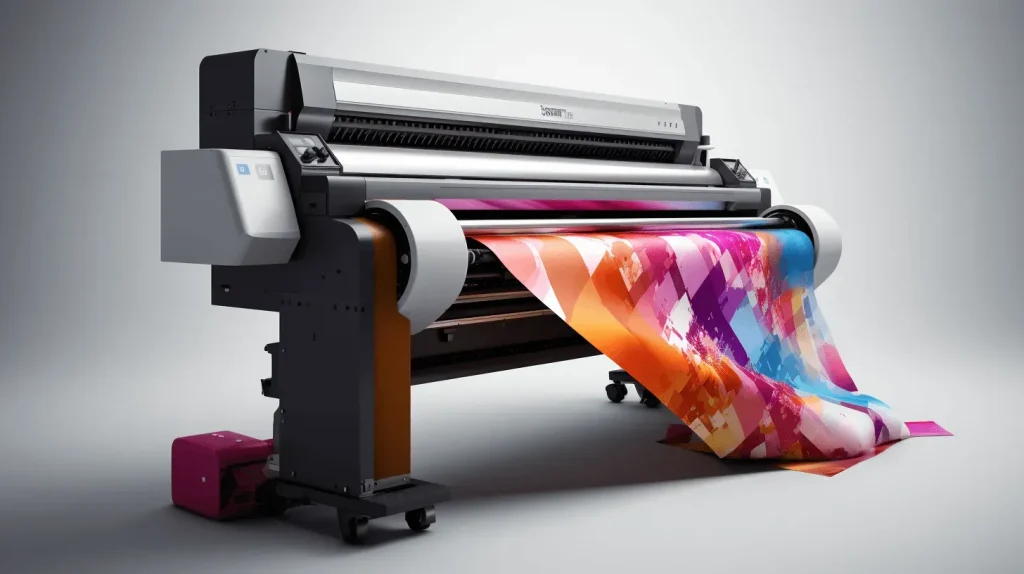If you’re keen on exploring the realm of custom apparel, **DTF printing**, or Direct to Film printing, presents an exciting opportunity for beginners. This cutting-edge printing method enables seamless transfer of intricate designs onto various fabrics, bringing your creative visions to life. In this comprehensive guide, we will unveil the DTF printing process, from selecting the appropriate equipment to perfecting your final designs. Whether you’re a hobbyist or an aspiring business owner, understanding how to DTF print will empower you to create eye-catching garments. Join us as we embark on this artistic journey, ensuring that your creations not only resonate with your style but also stand the test of time.
Also known as Direct to Film printing, this modern transfer technique has quickly become a preferred choice for those seeking to enhance their custom fabric designs. The DTF printing process involves printing high-quality designs onto a specialized film that is later heat-transferred onto the desired material. This approach offers versatility, as it can easily be adapted for different fabric types, encouraging creativity and innovation in custom apparel. Moreover, a detailed **DTF printing guide** can significantly demystify this method for newcomers, providing them with essential knowledge on materials, design creation, and the overall workflow. By understanding how to navigate the intricacies of DTF printing, enthusiasts can open doors to endless design possibilities.
Understanding the Basics of DTF Printing
Direct to Film (DTF) printing stands out as a revolutionary method in the world of textile printing. This technique allows for the direct transfer of designs printed onto a special film, which is subsequently transferred onto fabric using heat and pressure. What sets DTF printing apart from other methods, such as screen printing, is its versatility and ability to produce high-quality prints with vibrant colors. DTF printing can successfully work on a range of materials, including cotton, polyester blends, and other synthetic fabrics, making it a popular choice for custom apparel enthusiasts.
To effectively start using DTF printing, it’s crucial to understand not only the technology but also the materials involved. A reliable DTF printer is essential, along with specialized inks that enhance the quality of the output. These specific inks are designed to bond with the film material, providing a strong transfer that resists fading and cracking over time. Furthermore, using high-quality transfer films ensures that the printed designs maintain their clarity and vibrancy, leading to professionally finished products.
Key Equipment for DTF Printing
The foundation of a successful DTF printing venture lies in having the right equipment. First and foremost, you will need a good-quality DTF-compatible printer. Many beginners opt to modify existing inkjet printers to accommodate DTF printing. This often involves changing the ink types and utilizing specific settings to achieve the best results. Alongside the printer, you will require DTF ink, which comes in various colors and formulations, suited for your design and material.
In addition to the printer and ink, there are other essential supplies you’ll need for DTF printing. High-quality film sheets are vital, as they provide the surface needed for printing your designs. The adhesive powder is another key component, applied to the inked film immediately after printing and curing. Lastly, a heat press machine is necessary to bond the printed designs to fabrics effectively. Investing in reliable equipment is crucial to ensure your final products are not only visually appealing but also durable.
Creating Stunning Designs for DTF Printing
Design creation is where your creativity can truly shine in DTF printing. Beginners can use graphic design software such as Adobe Illustrator or Photoshop to craft their artwork. It’s important to ensure your designs are high-resolution, ideally at least 300 DPI, to maintain clarity and quality during the printing process. Select vibrant colors that stand out on fabric, as DTF printing allows for intricate designs that can handle a wide color palette.
Moreover, consider the use of layers in your designs, as DTF printing allows for complex graphics that can consist of multiple colors and textures. Experiment with gradients and shading to create depth. Once your design is complete, save it in an appropriate file format, typically PNG or TIFF, which preserves the quality and transparency of your artwork. This will set the stage for successful DTF printing, ensuring that your final product is nothing short of striking.
The DTF Printing Process Explained
The DTF printing process involves several key steps that must be executed with precision. First, the design created is printed onto the DTF film using the modified printer. It’s vital to mirror the image if any text or directional graphics are included to ensure the output appears correctly on the fabric. Immediately after the design is printed, a layer of adhesive powder must be sprinkled uniformly across the wet ink, which will help in adhering the design to the fabric.
Once the powder is applied, the adhesive must be cured using the heat press. This step solidifies the bond between the adhesive and the ink, making sure the design adheres effectively when transferred to the fabric. Following this, the film is aligned on the desired fabric with the printed side facing down, and again, the heat press is used to apply heat and pressure for a specified duration. It is during this step that the magic happens, turning your printed design into a vibrant fabric graphic.
Post-Processing Tips for DTF Prints
After the transfer process, proper post-processing is essential to ensure the longevity and durability of your DTF prints. One of the best practices is to use the heat press again without the release film. This additional step further cures the transfer, reinforcing the bond between the ink and the fabric. It’s recommended to allow your printed apparel to cool down before any handling to ensure the design adheres properly.
Another important aspect of post-processing is providing care instructions for your garments. Instruct customers to wash the apparel inside out in cold water to preserve the integrity of the design. Avoiding harsh detergents and bleach will also enhance the lifespan of your prints. By taking these post-processing steps, you can ensure that your DTF printed designs remain vibrant and intact even after repeated washings.
Exploring Resources for DTF Printing Success
To become proficient in DTF printing, beginners should seek out resources that provide valuable insights and tips. Websites such as Printavo and T-Shirt Magazine offer extensive guides and tutorials focused on DTF printing techniques. These resources can help you troubleshoot common issues, learn new designs, and refine your printing process to achieve exceptional results.
In addition to written resources, YouTube channels focused on DTF printing can be highly beneficial for visual learners. Channels like The Print Life and Tshirt Help Desk share practical tips and in-depth reviews of equipment, supplies, and techniques. Engaging with these platforms allows you to connect with a community of enthusiasts who can offer support and inspiration as you navigate your DTF printing journey.
Frequently Asked Questions
What is DTF printing and how does it work?
DTF printing, or Direct to Film printing, is a modern transfer printing method that prints designs onto a special film, which is then transferred onto fabric using a heat press. This technique allows for vibrant colors and intricate designs on a variety of materials, making it a popular choice for custom apparel.
What equipment do I need to start DTF printing for beginners?
To begin with DTF printing, you will need essential equipment including a DTF-compatible inkjet printer, DTF ink, high-quality film sheets, adhesive powder, and a heat press. This setup will enable you to create stunning designs on fabric.
How do I create a design for DTF printing?
To create a design for DTF printing, use graphic design software like Adobe Illustrator or Photoshop. Ensure your artwork is high resolution (at least 300 DPI) for optimal print quality, and choose vibrant colors that will pop on the fabric during the transfer process.
What is the DTF printing process step-by-step?
The DTF printing process involves these key steps: print your design onto DTF film; sprinkle adhesive powder over the wet ink; cure the adhesive with a heat press; transfer the design to fabric using heat and pressure; and finalize by curing the transfer to enhance durability.
How do I ensure the durability of my DTF printed designs?
To ensure durability, it’s important to follow post-processing steps such as curing the transfer with the heat press without the release film. Additionally, provide washing instructions such as recommending cold wash cycles and airing out garments to maintain their quality.
What resources are available for learning more about DTF printing?
There are numerous resources available for learning DTF printing, including blogs like Printavo and T-Shirt Magazine, as well as YouTube channels such as The Print Life and Tshirt Help Desk. These platforms offer tutorials, tips, and troubleshooting advice for beginners.
| Step | Description |
|---|---|
| 1. Equipment and Materials Needed | Essential gear includes a DTF printer, special inks, transfer film, adhesive powder, and a heat press. |
| 2. Design Creation | Create high-resolution graphics using design software to ensure vibrant prints. |
| 3. The Printing Process | Print the design on DTF film, sprinkle adhesive, cure under heat. |
| 4. Transfer to Fabric | Attach the film to fabric with heat and pressure to transfer the design. |
| 5. Post-Processing | Re-press the design for durability and provide washing instructions. |
Summary
DTF printing is an innovative and beginner-friendly technique for creating custom apparel. It streamlines the process of transferring intricate designs onto various fabric types, combining efficiency with exceptional print quality. Through the steps outlined, newcomers can harness DTF printing to produce vibrant and lasting designs. By investing in the right equipment and following best practices in design and application, crafters and small business owners alike will find immense value in this modern printing method. As interest in custom apparel continues to rise, mastering DTF printing opens up exciting avenues for creativity and business growth.



